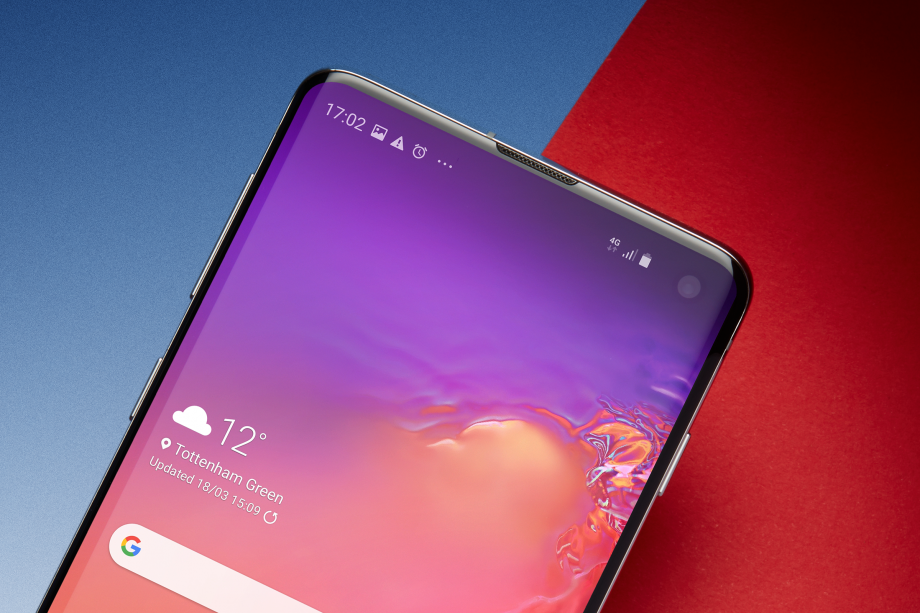Samsung Galaxy S10 Review - Screen Review
Screen
What is the Galaxy S10’s screen like? The screen is one of the phone’s key selling points, and it looks great. It features a 6.1-inch AMOLED panel, with HDR10+ support and a resolution that tops out at 3040 x 1440. It’s bright, colourful and is fantastic in direct sunlight. Max brightness levels are solid and […]

Sections
- Page 1 Samsung Galaxy S10 Review
- Page 2 Camera Review
- Page 3 Screen Review
- Page 4 Battery Life Review
- Page 5 Performance Review
What is the Galaxy S10’s screen like?
- The screen is one of the phone’s key selling points, and it looks great.
- It features a 6.1-inch AMOLED panel, with HDR10+ support and a resolution that tops out at 3040 x 1440.
- It’s bright, colourful and is fantastic in direct sunlight.
Max brightness levels are solid and more than high enough to ensure the phone is usable in everything but direct, bright sunlight. Even though some other phones can be manually jacked up higher than the results from the S10, it boosts further when it’s really sunny and when you’re watching videos.
The Galaxy S10 can play HDR-ready content from Netflix, Amazon Prime and YouTube. HDR content is more immersive than regular video since it extends the range of colours and contrast, letting you see more detail in low-light scenes. Samsung has added a video enhancer mode, which boosts colours and adds an HDR effect for SDR content.
Colours are also wonderfully well calibrated, being neither too cool nor too warm. Viewing angles are solid and white levels look nicely clean.
You can get a more detailed breakdown of how the Samsung Galaxy S10’s screen performed in our standard suite of tests in the charts below.
Samsung Galaxy S10 display: Brightness

Brightness is measured in nits, which is a measure of intensity divided by area. Max brightness capped out at around 354 nits; however, with the S10 the brightness can boost much further in bright sunlight and when watching supported HDR video.
A nit is a measurement of how much luminescence (light) comes off a screen. As a rule of thumb, most people will find around 150-200 nits comfortable to view in regular lighting. To be HDR-ready a phone should be able to boost to 600 nits – something the S10 can do in instances when it’s required.
In day-to-day use I normally kept the screen at about 50% brightness, which I felt was comfortable for all kinds of situations. There’s auto-brightness, too, which alters levels depending on your current environment.
Related: What is HDR?
Samsung Galaxy S10 display: Black levels

The use of OLED (dynamic AMOLED, as Samsung calls it) rather than LCD means the screen can offer inky, deep black levels. OLEDs offer perfect black and this is the reason you’ll find all OLED panels scoring the same.
Samsung Galaxy S10 display: Contrast ratio

Since the Galaxy S10 – like the iPhone XS and Pixel 3 – boasts an OLED display, it has an infinite contrast ratio. Contrast ratio is a figure based on the white and black levels; it measures the distance between the darkest blacks and brightest whites. A better contrast ratio means the screen will look more dynamic and ensure that high-contrast photos and videos – such as HDR content – looks more immersive and realistic.
Sadly, getting an accurate contrast ratio on AMOLED screens is impossible since the way they render 0.00 level blacks means readings will always come out as infinite, regardless of the max brightness.
Samsung Galaxy S10: Colour accuracy

Colour temperature on the Samsung Galaxy S10 is very close to the 6500K ideal, meaning you’ll get whites that aren’t ruined by a yellowy tinge.
Colour gamut coverage is an area where the Samsung Galaxy S10 excels. Colour gamuts are metrics used by artists and photographers. A higher coverage indicates the colours will look the same when physically printed.

The bog-standard sRGB space is the one used day-to-day, and the easiest to cover. The 100% coverage is excellent.

The Adobe RGB is getting a little long in the tooth, but it’s still favoured by many artists, photoraphers and designers that work in physical media. The 93% coverage again shows how accurate this screen is.

DCI-P3 is the standard used by most cinemas. It has been increasingly targeted by mobile device manufacturers since Apple used it in its iPad Pro marketing. The Samsung Galaxy S10’s 99% coverage is excellent and makes the S10 one of the best choices if you’re into media streaming.


